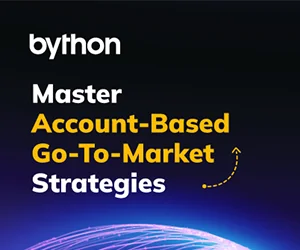Gone are the days of clunky spreadsheets and outdated financial software. Today’s tech CFOs are turning to cloud-based budgeting tools to stay ahead of the curve. These powerful platforms offer real-time insights, seamless collaboration, and the flexibility to adapt to rapidly changing markets.
There are many options to consider, which can make you wonder how to effectively choose the right tool for your company. We’ve done the legwork for you. This comprehensive guide explores the landscape of these tools, comparing top options and highlighting their benefits for tech CFOs.
We’ll explore must-have features, analyze popular platforms, and highlight key factors to consider when deciding.
- Definition Cloud-Based Budgeting
- Key Features of Cloud-Based Budgeting Tools
- Leading Cloud-Based Budgeting Tools for Tech CFOs
- Cloud-Based Budgeting Tool Comparison
- Advantages & Challenges
- Emerging Trends in Cloud-Based Budgeting
- Case Studies of Successful Implementation
- User Experience and Feedback
What is Cloud-Based Budgeting?
Cloud-based budgeting is a modern financial planning and management approach that uses online software to create, track, and adjust budgets. These tools store data on remote servers, allowing users to access and update financial information from anywhere with an internet connection.
Unlike traditional budgeting methods that rely on spreadsheets or local software, cloud-based tools offer real-time updates and collaborative features. They typically provide a centralized financial data, forecasting, and reporting platform.
Advantages Over Traditional Methods
Cloud-based budgeting tools solve many problems associated with older methods:
- Accessibility: Team members can work on budgets from any location, improving flexibility and remote work capabilities.
- Real-time updates: Changes reflect instantly across the system, eliminating version control issues common with spreadsheets.
- Scalability: Cloud tools can grow with your business, handling increasing data volumes and users without needing major upgrades.
- Automation: Many repetitive tasks are automated, reducing manual work and the risk of errors.
- Collaboration: Multiple users can simultaneously work on the same budget, improving teamwork and communication.
- Data accuracy: Cloud tools often include built-in checks and validations to help maintain data integrity.
- Integration: Many cloud budgeting software can connect with other financial systems, creating a more streamlined workflow.
Cloud-based budgeting solutions alleviate these issues, allowing CFOs and their teams to operate more effectively.
Essential Features of Cloud-Based Budgeting Tools
Modern cloud-based budgeting tools offer a range of features that make financial management easier and more efficient. Here are the key features tech CFOs should consider:
-
Automated Workflows and Reporting
These tools automatically take care of repetitive tasks. Instead of manually entering data or creating reports from scratch, the system does automated workflows for you. It can pull information from different sources, run numbers, and create reports with minimal input. This means tasks like closing the books at month-end can be done much faster.
-
Collaboration Features
Cloud platforms are great for teamwork. Multiple team members can work on the same budget simultaneously, seeing updates as they happen. Shared screens let everyone view and discuss financial data together, even if they’re not in the same office. Some tools also let you add comments or approve changes, making it easy to keep track of discussions and decisions.
-
Data Security and Compliance
Protecting financial information is crucial. Cloud base budgeting software typically have strong security measures in place. This includes scrambling data so it can’t be read by unauthorized people (encryption), requiring multiple steps to log in (multi-factor authentication), and regularly saving copies of your data (backups). Many tools also help you follow important rules and standards for handling financial data.
-
Customization and Integration
Every company has its way of doing things. Cloud tools often let you adjust them to fit your needs. You can set up dashboards, reports, and workflows that match how your team works. These systems also connect with other business software you use, creating a more unified approach to managing your company’s finances.
Top Cloud-Based Budgeting Tools for Tech CFOs
Tech CFOs have several strong options when selecting a cloud-based budgeting tool. Let’s look at some of the top contenders in the market:
| Prophix | Prophix is a comprehensive financial planning and analysis software that helps organizations streamline budgeting, forecasting, and reporting processes. |
| Anaplan | Anaplan is a cloud-based platform for connected planning across various business functions, including finance, sales, and supply chain. |
| Planful | Planful, formerly Host Analytics, is a cloud-based financial planning and analysis solution combining budgeting, forecasting, and financial close capabilities |
| Workday Adaptive Planning | Workday Adaptive Planning is a cloud-based financial planning and analysis tool that enables organizations to create more accurate budgets, forecasts, and reports. |
| Vena Solutions | Vena Solutions is a financial planning and analysis platform that combines the familiarity of spreadsheets with the power of enterprise-grade software. |
Comparative Analysis of Cloud-Based Budgeting Tools
These platforms were selected based on their powerful features, positive user reviews, and widespread adoption in the tech industry. Each tool offers unique strengths that cater to different sector needs, from AI-powered forecasting to Excel-like interfaces.
| Tool | Key Features | Ideal Use Cases |
|---|---|---|
| Prophix | ● Comprehensive budgeting, planning, and forecasting capabilities ● Automated data integration and consolidation ● Advanced scenario modeling and what-if analysis ● Strong reporting and dashboarding tools |
● Mid-sized to large organizations seeking an all-in-one financial planning solution ● Companies requiring detailed scenario analysis for strategic planning ● Businesses looking to automate their budgeting and forecasting processes |
| Anaplan | ● Highly flexible and scalable modeling capabilities ● Real-time collaborative planning across multiple departments ● Robust data integration and analytics ● Customizable dashboards and reporting |
● Large enterprises with complex, cross-functional planning needs ● Organizations requiring frequent re-forecasting and agile planning ● Businesses seeking to connect financial planning with operational planning |
| Planful | ● Unified platform for budgeting, forecasting, and financial close ● User-friendly interface with Excel-like functionality ● Strong financial consolidation capabilities ● Built-in financial intelligence and best practices |
● Mid-sized companies looking for an intuitive, all-in-one financial platform ● Organizations seeking to streamline their financial close process ● Businesses transitioning from spreadsheet-based planning to a more robust solution |
| Workday Adaptive Planning | ● Cloud-based, highly scalable platform ● Powerful modeling and forecasting capabilities ● Seamless integration with other Workday modules ● Strong collaboration and workflow management features |
● Organizations already using or considering other Workday products ● Fast-growing companies requiring a scalable planning solution ● Businesses seeking to improve cross-departmental collaboration in planning |
| Vena Solutions | ● Excel-based interface combined with enterprise-grade functionality ● Automated data integration and consolidation ● Version control and audit trail capabilities ● Customizable workflows and approval processes |
● Organizations with a strong preference for Excel-like interfaces ● Companies looking to enhance their existing spreadsheet-based processes ● Businesses requiring strong audit and compliance features in their planning tools |
Additional Tools Worth Considering:
- Cube: Known for its spreadsheet-friendly approach and quick implementation.
- Workiva: Excels in financial reporting and regulatory compliance.
- Solver: Offers strong BI capabilities alongside budgeting features.
When assessing these tools, consider your business’s size, growth goals, and unique budgetary challenges. The right tool should meet your current needs and support your company’s future growth and evolving financial processes.
Benefits of Using Cloud-Based Budgeting Tools
Cloud-based budgeting tools have revolutionized financial management for tech companies. Here are four key areas where cloud-based budgeting tools significantly impact tech CFOs and their teams.
-
Time-Saving
Cloud-based budgeting tools streamline processes, saving finance teams significant time. These tools automate data collection, consolidation, and report generation.
A tech startup might reduce its month-end closing process from five days to just one day using automated data imports and pre-built report templates. Features like collaborative workflows also eliminate time-consuming back-and-forth emails, allowing teams to work simultaneously on budgets.
-
Reduction in Human Error
Automation and built-in validation rules in cloud tools help minimize mistakes common in manual processes. For instance, formula errors in complex spreadsheets, a frequent issue with traditional methods, are largely eliminated.
Cloud tools also solve version control problems, ensuring everyone works with the most up-to-date information. This error reduction can lead to more accurate forecasts and better resource allocation.
-
Improved Decision Making
Real-time data access and advanced analytics support more informed and timely decisions. CFOs can quickly run multiple scenarios to assess the potential outcomes of different strategies.
A tech CFO could instantly see how changing product pricing might affect overall revenue and profitability across various market conditions. This agility is crucial in the fast-paced tech industry, where market conditions can change rapidly.
-
Cost Efficiency
While there’s an upfront investment, many companies see significant ROI from cloud budgeting tools. Cost savings come from reduced IT infrastructure needs, lower error-related costs, and improved finance team productivity.
The scalability of cloud solutions also means companies only pay for what they need, allowing for better cost management as the business grows. Over time, these efficiencies can translate into substantial savings for tech companies of all sizes.
Challenges and Considerations
Cloud-based budgeting tools offer significant advantages but also present challenges that finance professionals must navigate.
-
Potential Drawbacks
Potential drawbacks include ongoing subscription costs. It accumulates over time and exceeds traditional software expenses. These tools also often have a learning curve that may temporarily impact productivity as team members adapt to new systems. Data privacy and security concerns are crucial, as sensitive financial information is stored off-site.
-
Choosing the Right Tool
Considering your company’s size, unique needs, and budget is a must when selecting the appropriate tool. Larger enterprises may require more complex features, while smaller businesses might prioritize ease of use. Utilizing trial periods is essential to evaluate each tool’s functionality and fit thoroughly. Assessing customer support quality is equally important because it can significantly impact how you use the software in the long run.
-
Implementation and Training
Successful implementation requires a clear rollout plan and allocation of sufficient resources. Prioritize comprehensive training for all users to ensure smooth adoption. Ongoing support and regular refresher sessions can help maintain proficiency and maximize the tool’s benefits, ultimately enhancing your financial planning and analysis processes.
Future Trends in Cloud-Based Budgeting
Cloud-based budgeting tools constantly improve due to new technology and shifting business requirements. Here are key trends shaping the future of these tools:
-
AI and Machine Learning Integration
As AI technology matures, it’s set to revolutionize financial planning and analysis.
- Advanced predictive analytics for more accurate forecasting
- Automated anomaly detection to identify unusual financial patterns
- Natural language processing for easier data querying and reporting
-
Increased Focus on User Experience
Future tools will prioritize accessibility and ease of use for all stakeholders.
- More intuitive interfaces with drag-and-drop functionality
- Customizable dashboards tailored to different roles within the organization
- Enhanced data visualization tools for more precise financial insights
-
Expansion of Integration Capabilities
Seamless connectivity across the entire tech stack will become the norm.
- Deeper integration with ERP, CRM, and other business systems
- Real-time data synchronization across multiple platforms
- API-first approaches for easier custom integrations
-
Enhanced Collaborative Features
The future of budgeting is inherently collaborative, breaking down silos.
- Real-time co-editing of budgets and forecasts
- Built-in communication tools for seamless collaboration
- Improved version control and audit trails
These advancements will drive better business outcomes and competitive advantage.
Case Studies: Successful Cloud-Based Budgeting Implementations
Cloud-based budgeting tools have revolutionized financial management in tech companies. These real-world examples illustrate their transformative impact:
-
Novotech (Clinical Research Organization)
Novotech‘s adoption of Anaplan yielded remarkable results:
- Report compilation accelerated by 66%
- Forecasting time reduced by 80%
- Financial workflows optimized across 30+ global sites
- Month-end reporting condensed from 3 days to 1
- Revenue forecast creation shortened from 2 weeks to 2 days
These improvements established a unified financial data source, boosted value-add analysis capabilities, enhanced data integrity, and bolstered confidence in financial planning.
-
Kuali Inc. (Education Technology Company)
Kuali Inc. faced unique challenges with its lean finance team. Implementing Vena and its AI assistant, Vena Copilot, brought significant advantages:
- Faster responses to stakeholder inquiries
- Enhanced data analysis capabilities
- Improved financial data security
- Empowered budget owners
This implementation allowed Kuali’s Finance Manager to allocate time strategically, strengthen business partnerships across the organization, and deliver superior reporting to investors and executives.
User Experiences and Feedback on Cloud-Based Budgeting Tools
Tech CFOs have reported diverse experiences with cloud-based budgeting tools.
-
Workday Adaptive Planning
Workday Adaptive Planning garners praise for its technology-driven process transformation, significant reduction in planning time, and exceptional customer support. The drawback is that users note limitations in sales planning and a steep learning curve due to its unintuitive layout.
-
Prophix
Prophix stands out for its user-friendly workflow, excellent training, and impressive development roadmap. However, some users struggle with reporting and find its formula flexibility lacking compared to Excel. It also faces criticism for its North American-centric approach.
-
Planful
Planful receives accolades for its supportive consultants, promising development plans, and streamlined processes. That said, it challenges users with complex reporting features and limited formula flexibility, potentially confusing non-IT/accounting end-users.
All these tools offer good support and improve processes, but each has its own strengths and weaknesses in terms of how it works and what it can do.
Final Thoughts
Cloud-based budgeting tools have revolutionized financial management for tech CFOs, offering a powerful combination of real-time insights, collaborative features, and advanced analytics capabilities. These platforms streamline financial processes, reduce errors, and provide the flexibility needed in today’s fast-paced business environment. While challenges like implementation and data security exist, the benefits often outweigh the drawbacks for many organizations.
Choosing the ideal cloud-based budgeting solution requires thoroughly assessing your company’s unique requirements, growth trajectory, and existing technology infrastructure. Look for a tool that aligns with your goals, offers robust integration capabilities, and provides user-friendly features. The right cloud-based budgeting tool will position your organization for more agile financial management and drive long-term success in the competitive tech industry.
Frequently Asked Questions about Cloud-Based Budgeting Tools
Q. Are there any offline capabilities in cloud-based budgeting tools?
A. Many tools offer limited offline functionality, allowing users to view and sometimes edit data without an internet connection. Changes typically sync automatically once the user reconnects.
Q. What level of technical expertise is needed to implement these tools?
A. Basic implementation usually requires minimal technical skills, as most tools are designed to be user-friendly. However, IT support or vendor consultation may be necessary for complex integrations or customizations.
Q. What kind of customer support do most providers offer?
A. Most providers offer multiple support channels, including email, phone, and live chat during business hours. They also typically provide online resources such as user guides, video tutorials, and community forums for self-help.








